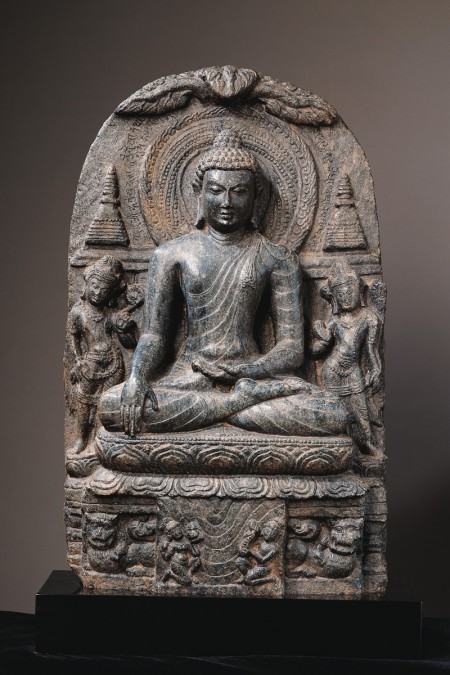India, Bihar or Bengal, Pala period, late 11th–early 12th century; schist; 37 1/2 x 18 1/2 x 6 3/4 in.; Asia Society, New York, Mr. and Mrs. John D. Rockefeller 3rd Collection, 1979.40, photo: Lynton Gardiner, Courtesy of Asia Society, New York.
Buddha Shakyamuni
India, Bihar, Pala period, late 9th–early 10th century; schist, 28 1/4 x 17 3/4 x 7 1/4 in.; Asia Society, New York, Mr. and Mrs. John D. Rockefeller 3rd Collection, 1979.37, photo: Lynton Gardiner.
Comparing Indian works from the same era reveals the iconographic distinctions between a buddha (or awakened one) and a bodhisattva (a great being committed to assisting others). Shakyamuni, known as the historical Buddha, wears monk’s robes and sits in lotus posture, indicating his status as a renunciant and his yogic attainments. In contrast, Khasarpana’s posture is relaxed; he is adorned in elaborate garments and ornaments, reminiscent of a medieval Indian prince. Yet both figures are inextricably linked—Avalokiteshvara is a concrete expression of an awakened being’s quality of infinite compassion.





